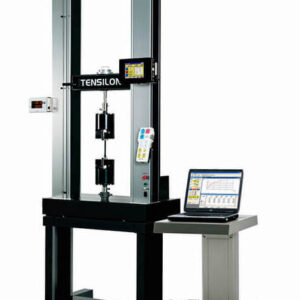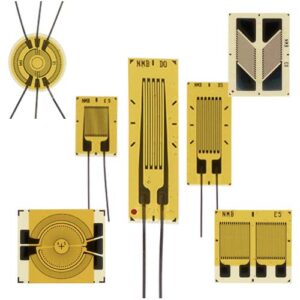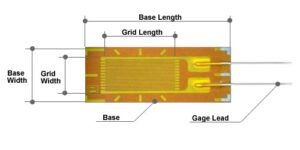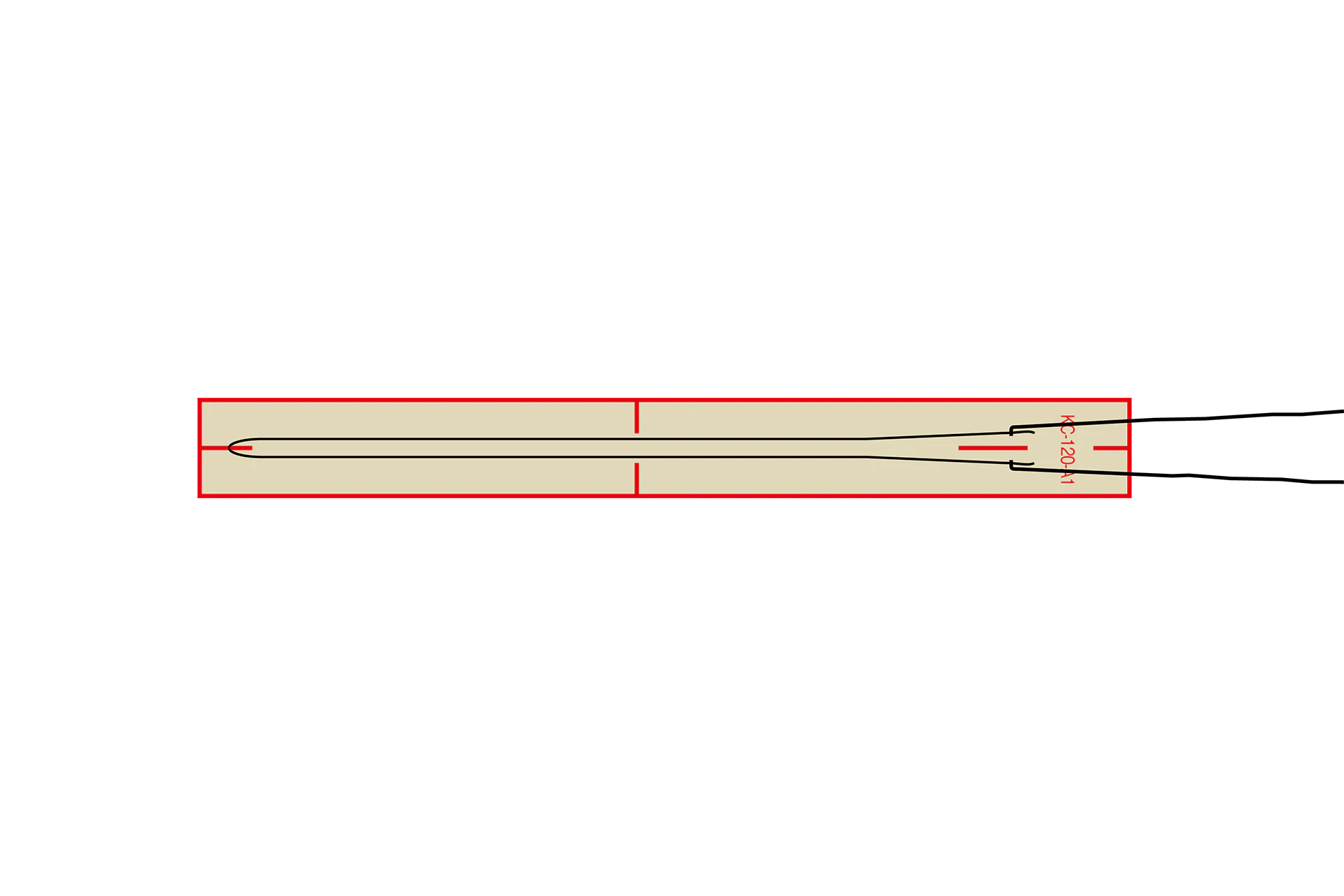-
 0 ₫1 × 0 ₫
0 ₫1 × 0 ₫
Máy đo ứng suất phát hiện ra sự thay đổi kích thước nhỏ (biến dạng) dưới dạng tín hiệu điện. Bằng cách đo biến dạng bằng máy đo được gắn vào vật liệu hoặc cấu trúc, độ bền hoặc độ an toàn sẽ được biết. Do đó, máy đo ứng suất được sử dụng trong nhiều ngành công nghiệp khác nhau bao gồm máy móc, ô tô, điện, kỹ thuật dân dụng, y tế và thực phẩm.
Máy đo ứng suất cũng được sử dụng làm bộ phận cảm biến lực, áp suất, gia tốc, độ rung, độ dịch chuyển và bộ chuyển đổi mô-men xoắn được sử dụng cho nhiều mục đích khác nhau bao gồm đo lường và kiểm soát dây chuyền sản xuất.
Kyowa đã sản xuất máy đo ứng suất đầu tiên do Nhật Bản sản xuất vào năm 1951 và dựa trên kinh nghiệm và công nghệ dồi dào tích lũy trong những năm này, chúng tôi sản xuất nhiều loại máy đo ứng suất hiệu suất cao, thân thiện với môi trường.
Nguyên lý của máy đo ứng suất
Nếu lực kéo bên ngoài hoặc lực nén tăng hoặc giảm, thì điện trở sẽ tăng hoặc giảm theo tỷ lệ. Giả sử điện trở ban đầu R thay đổi theo AR do biến dạng &: phương trình sau được thiết lập.
Các loại máy đo ứng suất
Các loại máy đo ứng suất được phân loại thành máy đo ứng suất lá, máy đo ứng suất dây và máy đo ứng suất bán dẫn, v.v.
Cấu trúc của máy đo ứng suất
Máy đo ứng suất lá có lá kim loại trên lớp cách điện bằng nhựa mỏng và các dây đo được gắn vào, như thể hiện trong Hình 2 bên dưới.
Máy đo ứng suất được liên kết với vật đo bằng chất kết dính chuyên dụng. Biến dạng xảy ra tại vị trí đo được truyền đến phần tử cảm biến ứng suất thông qua chất kết dính và đế nhựa. Để đo chính xác, máy đo ứng suất và chất kết dính phải tương thích với vật liệu đo và các điều kiện vận hành như nhiệt độ, v.v.
A strain gage detects a minute dimensional change (strain) as an electric signal. By measuring strain with the gage bonded to a material or structure, the strength or safety will be known. Thus, the strain gage is used in various industries including machinery, automobile, electric, civil engineering, medical, and food.
The strain gage is also adopted as a sensing element of force, pressure, acceleration, vibration, displacement, and torque transducers used for various purposes including measurement and control of production lines.

Kyowa produced the first Japanese-made strain gages in 1951, and based on the abundant experience and technology accumulated for these years, we manufacture a variety of high-performance, environmentally friendly strain gages.
Principles of Strain Gages
If external tensile force or compressive force increases or decreases, the resistance proportionally increases or decreases. Suppose that original resistance R changes by AR because of strain &: the following equation is set up.
Types of Strain Gages
Types of strain gages are classified into foil strain gages, wire strain gages, and semiconductor strain gages, etc.

Structure of a Strain Gage
The foil strain gage has metal foil on the electric insulator of the thin resin, and gage leads attached
The strain gage is bonded to the measuring object with a dedicated adhesive. Strain occurring on the measuring site is transferred to the strain sensing element via adhesive and the resin base. For accurate measurement, the strain gage and adhesive should be compatible with the measuring material and operating conditions such as temperature, etc.

KYOWA Strain gage bonding installation procedure
KYOWA KFGS General-purpose Foil Strain Gages
New strain gages with the world highest level performance.
| Materials Resistive element | CuNi alloy foil |
|---|---|
| Materials Base | Polyimide |
| Operating temperature in combination with major adhesives after curing (°C) | CC-33A: -196 to 120ºC CC-35: -10 to 120ºC CC-36: -30 to 100ºC EP-340: -55 to 150ºC PC-600: -196 to 150ºC |
| Operating temperature in combination with major leadwire cables (°C) | Polyester-coated copper wire: -196 to 150ºC Vinyl-coated flat cable (L-6, L-7): -10 to 80ºC Mid-temperature cable (L-11, L-12): -100 to 150ºC |
| Self-temperature-compensation (°C) | 10 to 100ºC |
| Applicable linear expansion coefficients (×10-6/℃) | 5, 11, 16, 23, 27 |
| Strain limits at normal temp. (approx. %) | 5.0 |
| Fatigue lives at normal temp. (times) | 1.2×107 (±1500μm/m) |
When ordering, specify the model of the strain gage and the code of the lead-wire cable with a space in between.
E.g.
KFGS-5-120-C1-11 With 2 polyester-coated copper wires 15 cm long
→KFGS-5-120-C1-11 N15C2
KFGS-5-120-C1-11 With a vinyl-coated flat 2-wire cable 5 m long
→KFGS-5-120-C1-11 L5M2R
KFGS-5-120-D17-11 With a vinyl-coated flat 3-wire cable 5 m long
→KFGS-5-120-D17-11 L5M3S
KFGS-5-120-C1-11 With a mid-temperature 3-wire cable 5 m long
→KFGS-5-120-C1-11 R5M3
KFGS-5-120-D17-11 With a mid-temperature 2-wire cable 5 m long
→KFGS-5-120-D17-11 R5M2
If no lead-wire cable code is suffixed, the gage is delivered with gage leads only.
(Silver-covered copper wires 25 mm long)

How to bond KYOWA KFRS miniature strain gages on a PCB

Featuring a longer gage length, the KC series gages are wire strain gages suitable for mean strain measurement of concrete under test. Usually, a model with the gage length over 3 times longer than the maximum diameter of the aggregate (gravel, sand, etc.) is selected for the purpose.
When ordering, suffix the lead-wire cable code to the model number with a space in between.
E.g.
For the gage with a vinyl-coated flat 2-wire cable 5 m long
→ KC-120-120-A1-11 L5M2R
If no lead-wire cable code is suffixed, the gage is delivered with gage leads only.
(Silver-covered copper wires 30 mm long)
Pic.: KYOWA Strain gauges type SKS-3032 ( 1000ohm/ 4pcs/box) at Semiki’s warehouse
Maintenance and calibration :
► We also have calibration certificate attached ( optional )
► Please re-calibrate after use for a certain period through our purchase store.

DISTRIBUTED BY:
Semiki instrumentation Co., Ltd
Email: sales@semiki.com
Office tel: +84 28 2253 3522
~DOING OUR BEST FOR YOU~